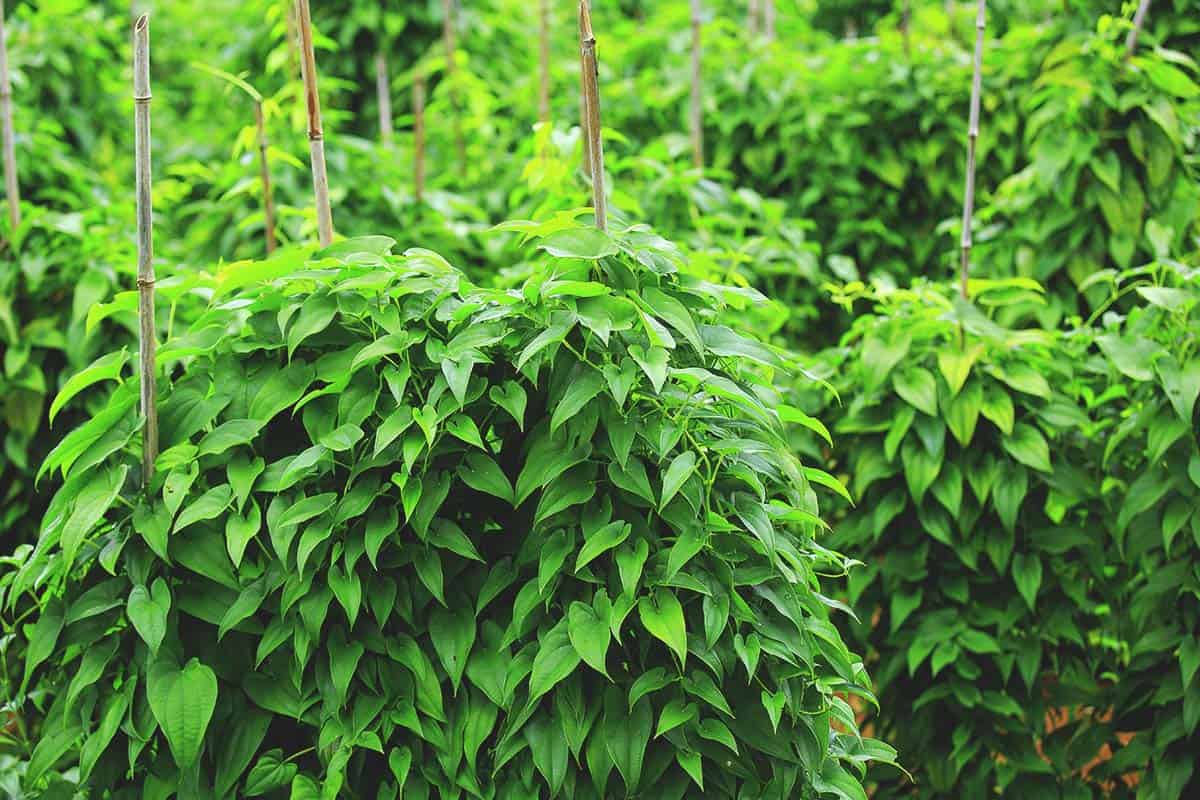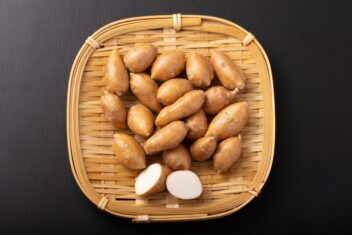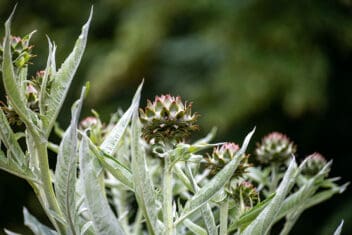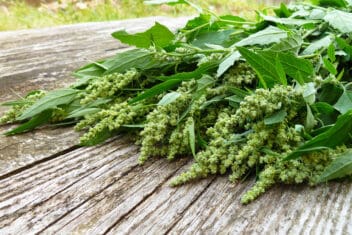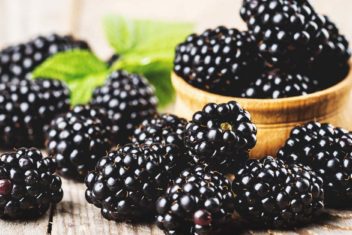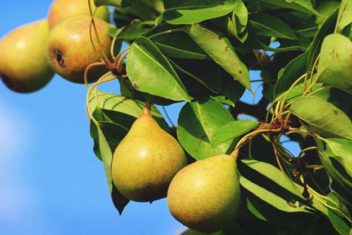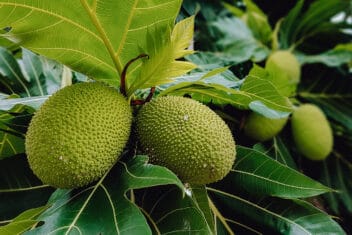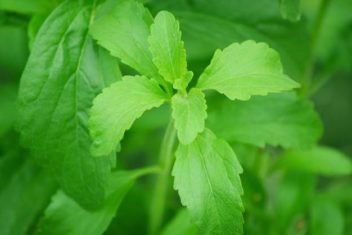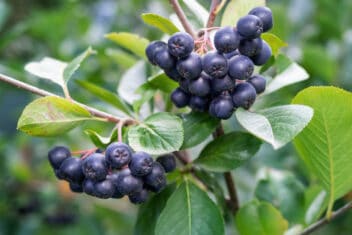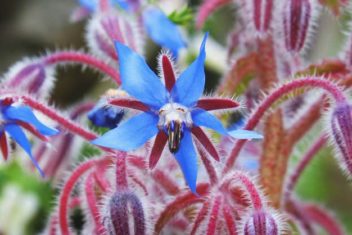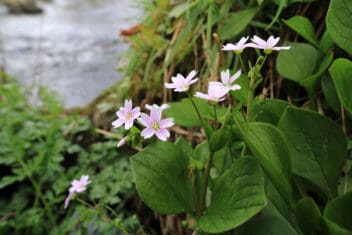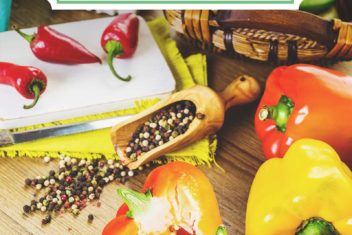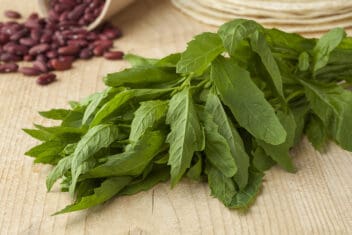If there is a vegetable that reminds me of holidays and family get-togethers, it’s the humble yam. Yams have featured in all of our special holiday feasts and I can’t imagine a festive meal without a lovely bowl of yams in some form or another. That’s why every year you’ll find me growing yams – even if it’s just one plant in the corner of my yard.
Most yams we buy from the store are grown overseas in tropical and sub-tropical countries around Africa and Asia. Yams are often mistaken for sweet potato, but they are two completely different plants. Yams are more difficult to grow and take much longer to be ready for harvest. They have rough skin, which is more difficult to peel than the skin of sweet potatoes.
Yams are a vigorous herbaceous vine that will climb on anything – some vines grow up to 8 inches in a day! The tubers can grow huge – up to 6 feet and 150 pounds, but most are more manageable in size. The best thing about yams, in my opinion, is that they require little attention once you plant them, and you’ll still be rewarded with a bountiful and tasty harvest.
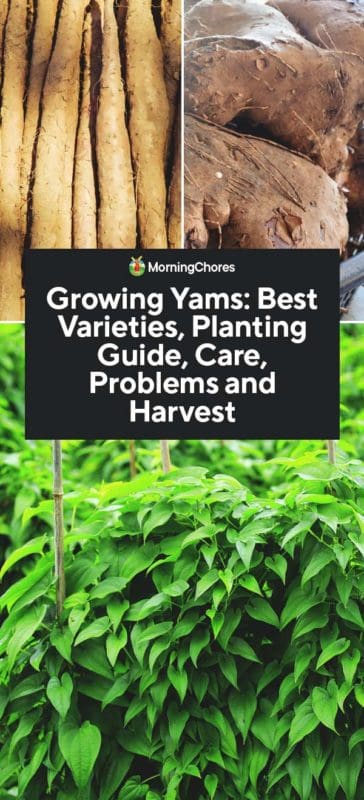
Yam Varieties
Related to African grasses and lilies, there are well over 600 types of yams, but I’ll cover what is commonly available and what I’ve grown in the past. Definitely talk to your local nursery about what grows best in your area.
If you want to grow a true yam, get yourself a yam tuber or talk to your local plant supplier to make sure you have yams and not sweet potatoes. It’s easy to buy something labeled yams and end up with a sweet potato instead.
Chinese Yam
Chinese yam is the most usable variety in terms of cooking traditional yam recipes. Treat it like a white potato and roast, bake, casserole or add it to stews. Its flesh is firm and is mild in taste. Chinese yam is a little cold-tolerant but still requires fairly warm temps.
Guinea Yams
Guinea Yams come with both white and yellow flesh varieties. Treat them like potatoes or sweet potatoes. These are big yams weighing on average about 5 pounds.
Ube (Filipino Purple Yam)
Ube has become popular in many farmer’s markets in the U.S. They can range from purple with white mottles to a deep lavender colored flesh. The skin is thick and brown.
Air Potatoes
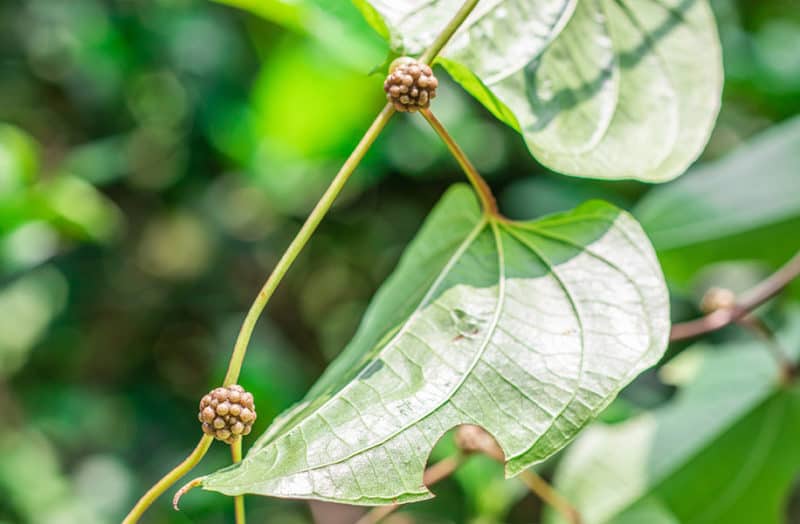
Air potatoes are cultivated in the U.S. and a few other countries. Some people consider them pests because of their rapid growth, but air potatoes are a true domestic yam. The plant produces edible tubers both above and underground, but beware – many wild varieties are poisonous.
Okinawan Yam
Used in both sweet and savory dishes, Okinawan yams are popular in Hawaii. The flesh is deep purple and they are versatile and taste particularly sweet when roasted.
American Yam
American yams are the ones you’ll often find on the Thanksgiving table, but they’re actually sweet potatoes. They could be described as faux yams, but the two plants are totally different. I mention them because you don’t want to end up with an American yam when you’re looking for a true yam.
Golden Yam
Originating in South America, this is another sweet potato considered a yam by many consumers and supermarkets alike. It’s a favorite in American homes.
How to Plant Yams
Zones
Zones 8 to 10 have success with growing yams. True yams can’t have any cold temps for their entire growing season, which can be as long as 11 months, though some are ready for harvest after 5 months.
If you live in a cooler area, it may still be possible to succeed at growing yams if you have a greenhouse and are willing to put in the effort.
Sun Requirements
Yams require full sun.
Soil Requirements
Yams like slightly acidic soil between 5.5 to 6.5pH. Rich loamy soil that drains well is best. Slight clay is okay, but hard compacted soil isn’t suitable.
When to Plant Yams
Plant yams indoors well before the last frost to get a good head start. You’ll either need to buy or grow slips or tubers. Plant outside once the last frost has passed and the temperature is consistently above 80°F.
How To Grow Slips
- Push three toothpicks in a yam about halfway down and place in a glass of water. Half the yam should be submerged and the other half held above the water by the toothpicks resting on the glass lip.
- Place in a sunny window and ensure the water level stays at the same height by topping up when necessary.
- In about three weeks, the yam will sprout slips that grow from the part of the yam not in the water.
- When the slips form a couple of leaves, gently twist the sprouts off.
- Lay the sprouts in a shallow dish with the bottom in water and the top leaves hanging over the side to help form roots.
- When the roots are about an inch long or more, they’re ready to plant.
How To Grow Tubers
I’ve had success with growing yam tubers, though I’ve found this method often gives me plants that end up with health issues like dry rot.
Use a healthy yam tuber and cut in half or quarters ensuring each piece has an eye that will grow a plant, the same as you chit potatoes. Rub wood ash over the yam and allow to sit for a few days to help prevent disease.
Plant in small pots with good quality potting mix and water well. When the plant sprouts and is a few inches tall, plant outside.
I’ve also had success in planting healthy tubers directly into the soil as you would a potato.
Spacing
I don’t plant yams in my garden with perfect spacing. I plant wherever there is suitable soil and something for them to crawl up. Some varieties are extremely prolific growers, so give them plenty of space.
To space in a more traditional way, plant each slip 12 inches apart with 5 feet between rows. You might want to give plants a structure to trail over, like a trellis or grate.
Some tubers grow big and need plenty of space. This is one plant you don’t want to grow too close together.
How to Care for Yams
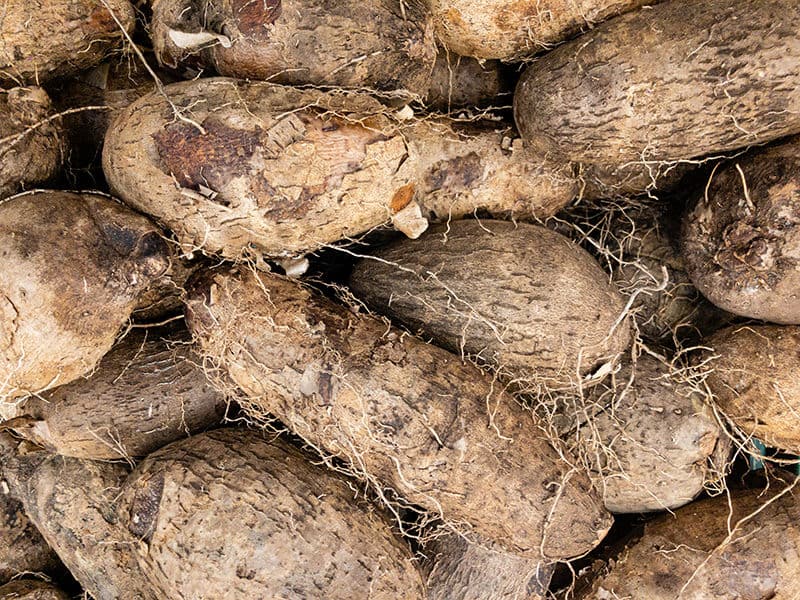
Irrigation
I’ve found yams to be relatively fuss-free, but when the slips are first planted and the plants are young, water well and ensure the soil remains moist, but not soaking.
Water every day for the first week or so, and then every second day in the second week and gradually lessen the watering as the plant gets bigger.
You want to end up giving plants about 40-inches of water over the growing season. Mulch around plants to conserve moisture. If the soil is too wet the yams will rot under the surface.
Fertilizing
When first planting the slips, plant in fertile soil with well-rotted organic matter. The roots of slips are sensitive to fertilizer when they’re young.
Fertilize every three weeks or so with a low nitrogen and high phosphorus product once the plants begin to take.
When the plant growth reaches a few feet high, I feed only if it looks as though the plant is weakening or slow-growing.
Mulching
With yams, I mulch with straw or hay to keep the moisture in.
Companion Planting for Yams
Don’t forget yams spread vigorously, so don’t plant them near other aggressive growers like squash.
- Cilantro
- Basil
- Oregano
- Marigold
- Beets
- Corn
- Radish
- Peas
- Tomatoes
- Peppers
- Summer savory to repel weevils
- Dill to attract predatory wasps who eat aphids and spider mites
Common Problems and Solutions for Growing Yams
Yam Mosaic Disease
This causes lesions on the leaves in a mosaic pattern. The plant withers and looks weak. It can cause stunted growth in the tubers, and they’ll have little starch content.
The best cure is prevention. Use slips resistant to this disease and ensure the area is weed-free during growth. Aphids spread this virus, so keep them under control. Otherwise, you can lose up to 50 percent of your yam harvest.
Scorch
Leaves become dry, brittle and look burned. This is a fungus that overwinters in debris so ensure your planting area is free of plant material and the soil is rich and healthy.
Dry Rot Disease
This disease is caused by a nematode. When dry rot is present, the tubers have small lesions on the outside of the skin. As the disease progresses, the lesion deepens into the tuber causing cracking and rotting.
Use slips and tubers that are disease-free, rub tubers with wood ash prior to planting or practice good crop rotation. Try growing yams where you last grew chili peppers to help control dry rot.
Mealy Bugs
These are little, flat bugs that leave behind a waxy substance. They suck the sap and moisture from the plant and excrete honeydew, which will attract ants and diseases like sooty mold.
Use neem oil at the first sign of the bug. You can also spray plants daily for a few weeks with diluted rubbing alcohol.
White Scale Insect
White scales appear on the tubers and often cause slow growth or even shriveling of the tubers.
Use a good quality neem oil or organic pyrethrum, as this is spread by insects.
Harvesting Yams
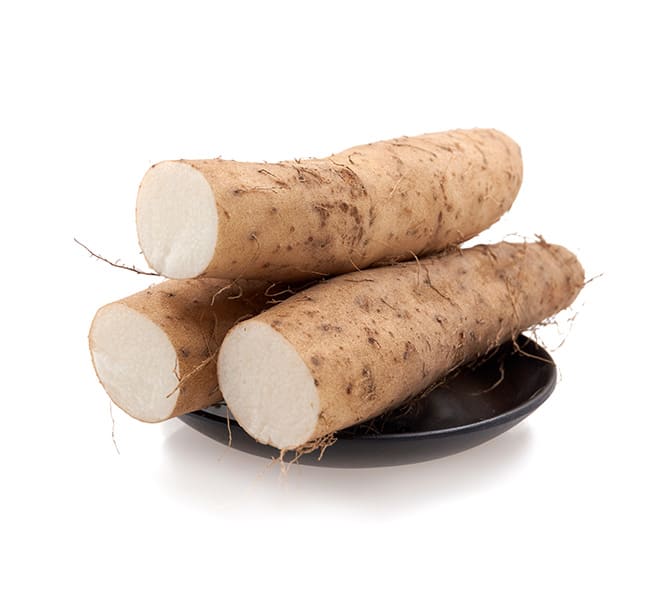
Once planted the yams will grow through spring, summer, and fall before dying off in the winter. They’re in the ground for approximately eight months, so patience is a virtue.
Once the leaves begin to yellow, wait another couple of weeks as the tubers will continue to fatten.
Carefully dig at the base of the plant and follow the tubers. Try not to cut them, but if you do, use the ones you nick first. If you have loose, loamy soil, use a garden fork as you would when digging out potatoes.
Storage
Don’t wash the dirt off the yams. Store them in a cardboard box in a cool dry area. Check them periodically for any that may be rotting or deteriorating.
Cook in the traditional holiday way or treat it as a white potato. You won’t be disappointed.
